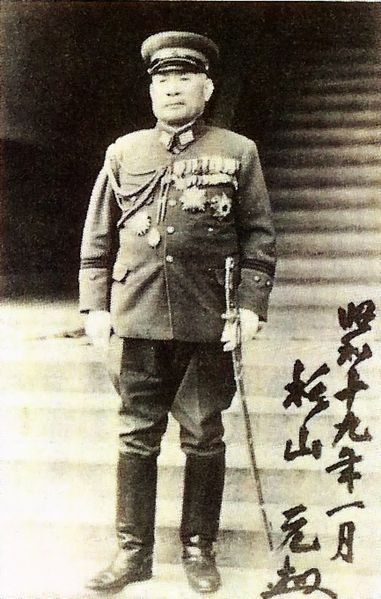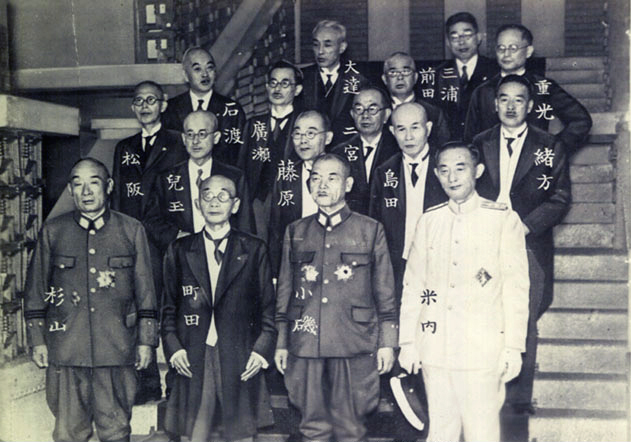<Back to Index>
- General of the Imperial Japanese Army Toshizō Nishio, 1881
- General of the Imperial Japanese Army Yasuji Okamura, 1884
- Field Marshal of the Imperial Japanese Army Hajime Sugiyama, 1880
PAGE SPONSOR
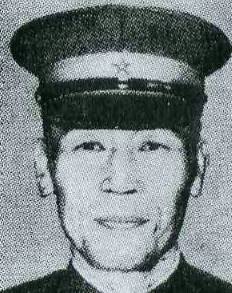
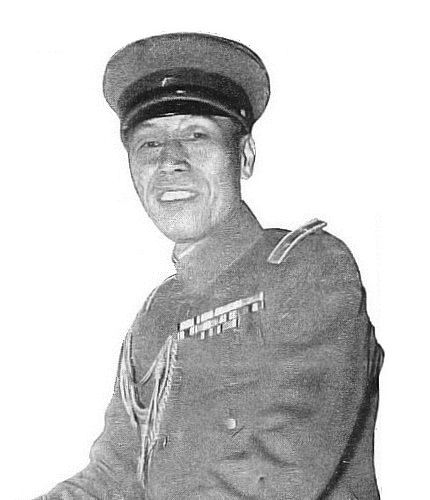
Toshizō Nishio (西尾 寿造 Nishio Toshizō, 31 October 1881 – 26 October 1960) was a Japanese general, considered to be one of the Imperial Japanese Army's most successful and ablest strategists during the Second Sino - Japanese War, who commanded the Japanese Second Army during the first years after the Marco Polo Bridge Incident.
Nishio was born in Tottori Prefecture, and was a graduate of the 14th class of the Imperial Japanese Army Academy in 1902, and the 22nd class of the Army War College (Japan). He served during the Russo - Japanese War, seeing combat at the Battle of Sandepu.
Nishio was first attached to the 10th Regiment / 10th Division from 1921 to 1923. Afterward, he was an instructor at the Army War College until 1925 when he became commanding officer of the 40th Regiment / 10th Division. From 1926 to 1929 he was Chief of the 1st Section, Inspectorate General of Military Training. In 1929 he was assigned to command the 39th Brigade of the IJA 20th Division, stationed in Korea. From 1930 to 1932 he was Chairman of Military Investigation in the Ministry of War, and then Head of the 4th Bureau of the General Staff in 1934.
On 5 March 1934, Nishio was appointed Chief of Staff of the Kwantung Army in Manchukuo, where he oversaw the establishment of the reorganization of the Manchukuo Imperial Army and the pacification of Manchukuo. In March 1936 he became Vice Chief of the General Staff and Acting Head of the General Affairs Bureau, of the General Staff. In early 1937, he briefly commanded the Imperial Guards Division, before being transferred to China at the beginning of the Second Sino - Japanese War.
After the Marco Polo Bridge Incident Nishio was sent to North China, and took command of the Second Army on 26 August 1937. He oversaw the Tianjin – Pukou Railway Operation that took the Japanese to the Yellow River. He was at the Battle of Xuzhou, crossing the Yellow river and overrunning Shandong until 30 April 1938. Shortly after the defeat his army suffered in the Battle of Taierzhuang, he was replaced and returned to Tokyo to be Inspector General of Military Training.
Nishio returned to China again to take command of the Thirteenth Army on 12 September 1939 for a month and then took command of all the forces in China as Commander - in - Chief of the China Expeditionary Army on 22 September 1939. He oversaw the Battle of Zaoyang - Yichang and the First Battle of Changsha. His force withstood the Chinese 1939 - 40 Winter Offensive and rolled back their gains in the spring with many operations including the Battle of Zaoyang - Yichang. His forces were again struck in North China by the Hundred Regiments Offensive, while he continued attacks in the Yangtze valley in the Central Hopei Operation and Western Hopei Operation. On 1 March 1941 he was replaced and returned to Japan to become a member of the Supreme War Council until he retired in 1943.
Nishio took up the governorship of the Tokyo Metropolis from 1944 to the end of the World War II. Although arrested after World War II by the American occupation authorities as a suspected war criminal, formal charges were never brought to trial and he was later released.
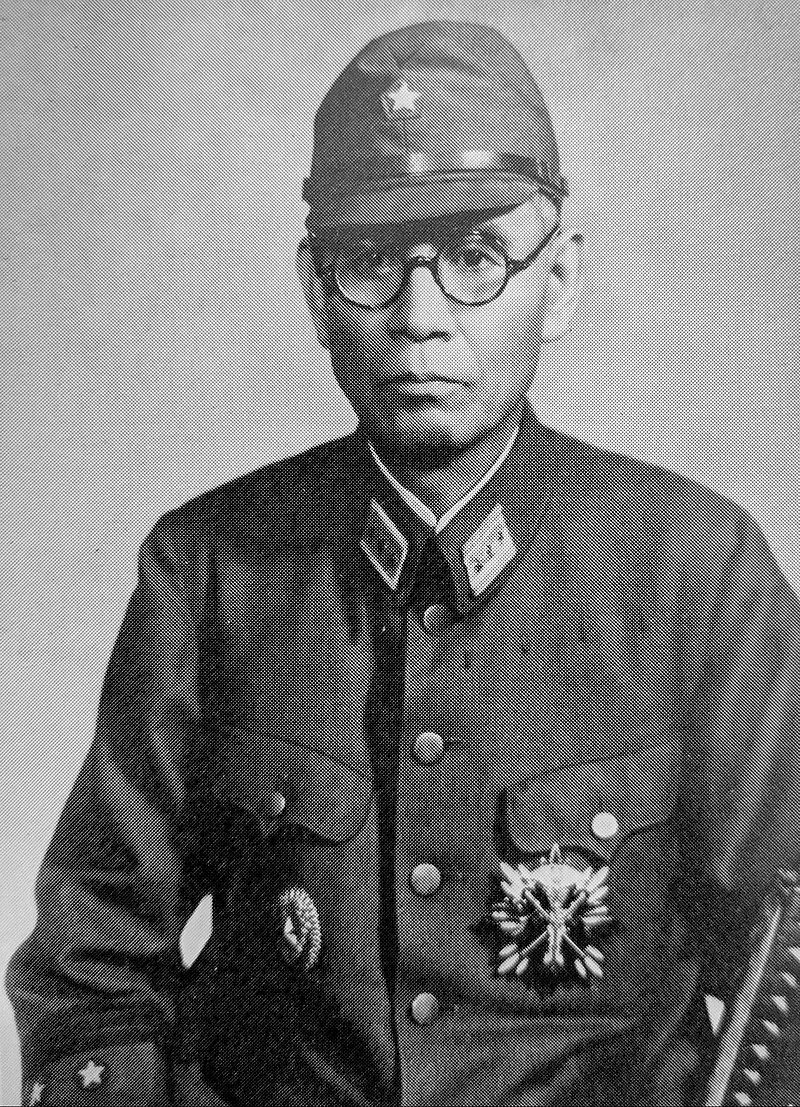
Yasuji Okamura (岡村 寧次 Okamura Yasuji, 15 May 1884 – 2 September 1966) was a general of the Imperial Japanese Army, war criminal, and commander - in - chief of the China Expeditionary Army from November 1944 to the end of World War II.
Born in Tokyo in 1884, Okamura enrolled in Sakamachi Elementary School and graduated eight years later. In 1897, he entered Waseda Junior High School. In 1898, he was transferred to Tokyo Junior Army School, and was transferred to Army Central Junior School later. Okamura entered the 16th class of the Imperial Japanese Army Academy in 1899 and graduated in 1904. His classmates included the future generals Itagaki Seishiro, Kenji Doihara and Ando Rikichi. He was commissioned a lieutenant in the IJA 1st Infantry Regiment.
In 1910, Okamura entered the 25th class of the Army War College, and was promoted to captain soon after graduation in 1913. He served in a number of staff positions on the Imperial Japanese Army General Staff during and after World War I. He moved briefly to China in the early 1920s, and served as a military advisor to a Chinese warlord.
From 1932 to 1933, Okamura was Vice chief - of - staff of the Shanghai Expeditionary Army under the aegis of the Kwantung Army. According to Okamura's own memoirs, he played a role in the recruitment of comfort women from Nagasaki prefecture to serve in military brothels in Shanghai. He also served as military attaché to Manchukuo from 1933 - 1934.
Okamura was promoted to lieutenant general in 1936, and assigned command of the IJA 2nd Division.
In 1938, a year after the Marco Polo Bridge Incident, Okamura was assigned as the commander - in - chief of the Japanese Eleventh Army, which participated in numerous major engagements in the Second Sino - Japanese War, notably the Battles of Wuhan, Nanchang and Changsha. According to historians Yoshiaki Yoshimi and Seiya Matsuno, Okamura was authorized by Emperor Showa to use chemical weapons during those battles.
In April 1940, Okamura was promoted to the rank of full general. In July 1941, he was appointed the commander - in - chief of the Northern China Area Army.
In December 1941, Okamura received Imperial General Headquarters Order Number 575 authorizing the implementation of the Three Alls Policy in north China, aimed primarily at breaking the Chinese Red Army. According to historian Mitsuyoshi Himeta, the scorched earth campaign was responsible for the deaths of "more than 2.7 million" Chinese civilians.
In 1944, Okamura was overall commander for the massive and largely successful Operation Ichigo against airfields in southern China, while retaining personal command of the Japanese Sixth Area Army. A few months later, he was appointed the commander - in - chief of the China Expeditionary Army. As late as January 1945, Okamura was still confident of the victory of Japan in China.
With the surrender of Japan on 15 August 1945, Okamura represented the Imperial Japanese Army in the China Burma India Theater official surrender ceremony held at Nanjing on 9 September 1945.
General Okamura is named as the first confirmed officer in the Japanese army who instituted forced prostitution. Widely known as the system of 'comfort women'. His order can be traced back to 1932 with documentation of Japanese Lieutenant General Okamura Yasuji’s proposal for a “shipment” of comfort women to be sent to Shanghai.
After the war, Okamura was convicted for war crimes in July 1948 by the Nanjing War Crimes Tribunal but was immediately protected by the personal order of Nationalist leader Chiang Kai-shek, who retained him as a military advisor for the Kuomintang (KMT) government.
While he was questioned by the investigators, he testified about the Nanking massacre:
"I surmised the following based on what I heard from Staff Officer Miyazaki, CCAA Special Service Department Chief Harada and Hangzhou Special Service Department Chief Hagiwara a day or two after I arrived in Shanghai. First, it is true that tens of thousands of acts of violence, such as looting and rape, took place against civilians during the assault on Nanking. Second, front line troops indulged in the evil practice of executing POWs on the pretext of (lacking) rations."
Okamura returned to Japan in 1949 and died in 1966.
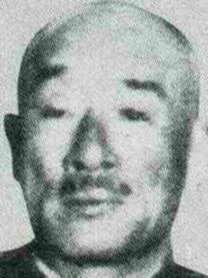
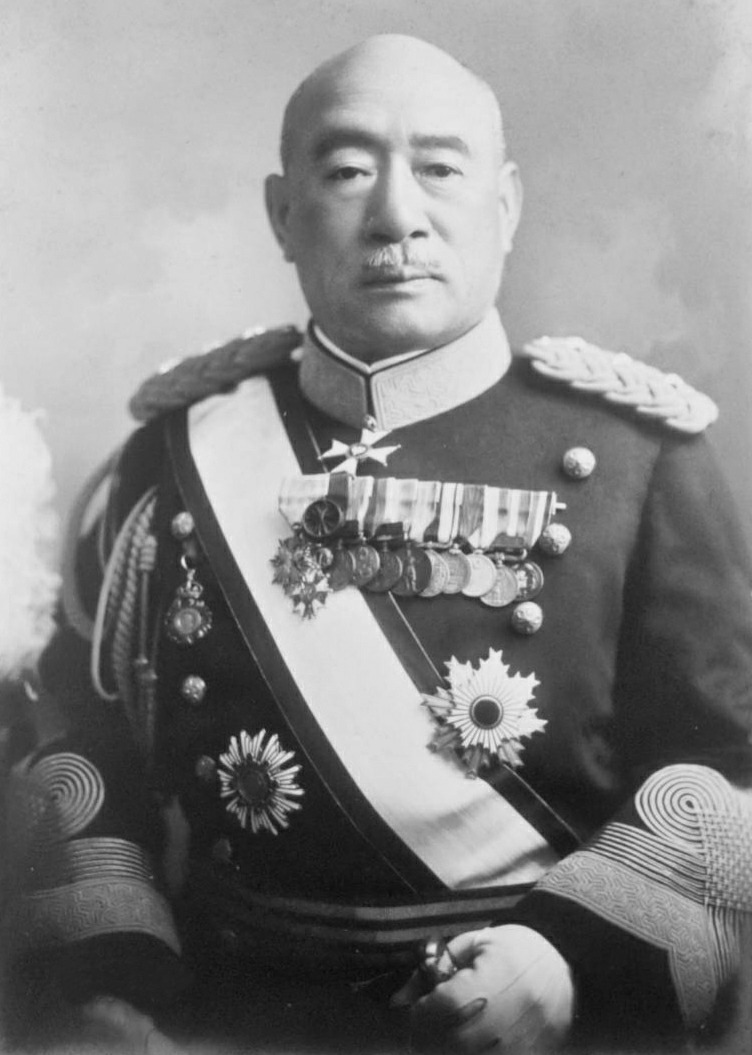
Hajime Sugiyama (杉山 元 Sugiyama Hajime / Sugiyama Gen, 1 January 1880 – 12 September 1945) was a field marshal who served as successively as Chief of the Army General Staff, and minister of war in the Imperial Japanese Army during World War II between 1937 and 1944. As War Minister in 1937, he was one of the principal architects of the China Incident or second Sino - Japanese War. Later, as Army Chief of Staff in 1940 and 1941, he was a leading advocate of expansion into Southeast Asia and later preventive war against the United States.
Born to a former samurai family from Kokura (now part of Kitakyushu City), Fukuoka Prefecture, Sugiyama was commissioned as a lieutenant in the infantry in 1901 after graduation from the 12th class of the Imperial Japanese Army Academy, and served in the Russo - Japanese War.
After graduating from the 22nd class of the Army Staff College in 1910 and serving on the Imperial Japanese Army General Staff, Sugiyama was posted as military attaché to the Philippines and Singapore in 1912. Promoted to major in 1913, he was posted again as military attaché to British India in 1915. During this time, he also visited Germany, and became acquainted with the use of aircraft in combat in World War I.
On his return, Sugiyama was promoted to lieutenant colonel, and commander of the 2nd Air Battalion in December 1918. He was a strong proponent of military aviation, and after his promotion to colonel in 1921, became the first head of the Imperial Japanese Army Air Service in 1922.
In May 1925, Sugiyama became a major general and acting Vice War Minister in June 1930. In August, he became Vice War Minister and a lieutenant general. He returned to command the expanded Imperial Japanese Army Air Service in March 1933. Sugiyama was promoted to full general in November 1936.
Although never elected to political office, Sugiyama is regarded as a nationalist politician. He started in the Toseiha faction, led by Kazushige Ugaki, with Koiso Kuniaki, Yoshijirō Umezu, Tetsuzan Nagata and Hideki Tōjō. They opposed the radical Kodaha faction under Sadao Araki. Later both factions combined in the Imperial Way Faction movement, and Sugiyama became one of its ideological leaders.
Shortly after the February 26 Incident, Sugiyama became Minister of War. Under his tenure, the situation between Japanese forces in Manchukuo and China became more severe, culminating with the Marco Polo Bridge Incident and the invasion of Shanxi Province.
Sugiyama briefly accepted a field command as commanding general of North China Area Army and the Mongolia Garrison Army in December 1938.
On his return to Japan, Sugiyama was briefly appointed head of Yasukuni Shrine in 1939. On 3 September 1940, he succeeded elderly Prince Kan'in Kotohito as Chief of the Imperial Japanese Army General Staff. He was one of the leading Army officers lobbying for war with the West. However, on 5 September 1941, on the verge of the war against the United States and Great Britain, he was severely berated by Emperor Hirohito for having earlier predicted in 1937 that Japanese invasion of China would be completed within three months, and challenged over his confidence in a quick victory over the Western powers.
Sugiyama was awarded the honorary rank of field marshal in 1943. As the war fronts collapsed on all sides, Sugiyama was relieved of his post as Chief of the General Staff on 21 February 1944, by General Hideki Tōjō (who continued to serve concurrently as Prime Minister).
Sugiyama was appointed as the Inspector General of Military Training, which was still one of the most prestigious positions in the Army. After Tōjō's ouster in 1944, Sugiyama again became Minister of War. In July 1945, he was asked to take command of the First General Army, which directed defenses of the Japanese mainland against the anticipated Allied invasion.
Ten days after the surrender of Japan, after finishing preparations for the final dissolution of the Imperial Japanese Army as dictated by the victorious Allied Powers, Sugiyama committed suicide by shooting himself four times in the chest with his revolver while seated at his desk in his office. At home, his wife also killed herself. His grave is at the Tama Cemetery, in Fuchū, Tokyo.
